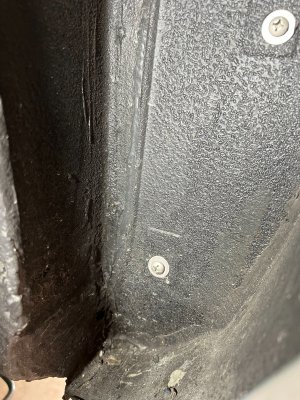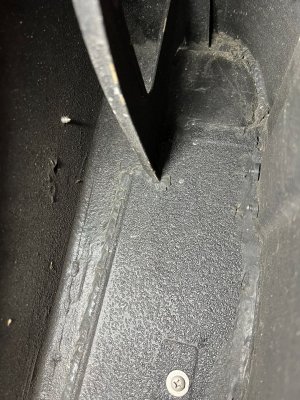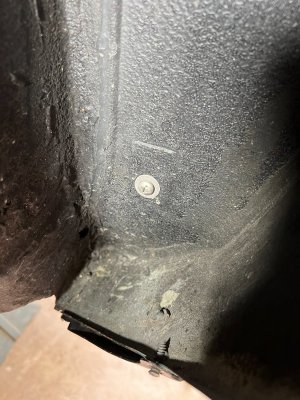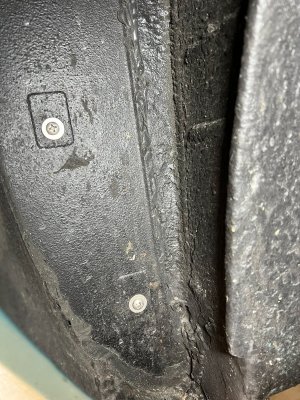oldcoupe
Well-Known Member
Getting ready to install these protective plates at the back of the front wheelarch -

I took a closer look - what to do about the void with the large opening behind the strut?

I'm thinking about spraying aerosol grease to coat and protect the interior, then fill it with closed-cell spray foam.
Similarly, the gap inside the outer skin is just waiting for water and mud, so again I thought grease and closed cell foam.
(the small piece of galvanised plate held with the hex head screw is a) to temporarily close the fixing hole for the protective plate, and b) check out the screw fixing before I install the protective plate)

If the car was kept in an area with surfaced roads I wouldn't worry so much, but we have three miles of dirt roads before tarmac.
Any helpful comments welcome.
Thanks
I took a closer look - what to do about the void with the large opening behind the strut?
I'm thinking about spraying aerosol grease to coat and protect the interior, then fill it with closed-cell spray foam.
Similarly, the gap inside the outer skin is just waiting for water and mud, so again I thought grease and closed cell foam.
(the small piece of galvanised plate held with the hex head screw is a) to temporarily close the fixing hole for the protective plate, and b) check out the screw fixing before I install the protective plate)
If the car was kept in an area with surfaced roads I wouldn't worry so much, but we have three miles of dirt roads before tarmac.
Any helpful comments welcome.
Thanks




